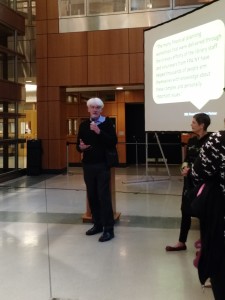When I showed my daughter the American Airlines map on our flight to her freshman year at Washington University in Saint Louis, and asked her if she could name the states surrounding Missouri, she got pretty mad at me. I’m sure there was a point in her public school education when she was required to learn the names of the 50 states, and identify them based on their shapes and/or placement in a map, but that was a distant footnote in her 12 years of public schooling. If she wasn’t able to name all eight contiguous states as she headed off to college, I hardly thought it was some failing on the part of the National Geographic Society.
As a long time subscriber of National Geographic, I have come to count on the magazine to whisk me to places I will never visit in my lifetime, and to dazzle me with landscape and nature photographs the likes of which I will never have the access or talent to take myself. Fifteen years ago, before going on a rafting trip down the Alsek River, I was able to learn about the section of the Yukon that the river crosses by accessing back issues of National Geographic at the NY Public Library. Today I would probably do the same research on Flickr, and although I am still a National Geographic subscriber, that is part of National Geographic’s dilemma in this digital age.
All that said, it was upsetting to read earlier this month that 21st Century Fox would be buying 73% of the newly formed National Geographic Properties, to become its majority owner, with National Geographic Society becoming the minority owner (the two organizations will have 50:50 board representation). I teach financial literacy, and have shown students it is an easy enough thing to go to Guidestar.org to obtain a not-for-profit organization’s 990 report and read about its financial results. For example, at the end of 2013, National Geographic Society had $72 million in fixed income investments, $64 million in hedge funds, $58 million in money market funds, and nearly $30 million in real estate investments.
The rationale for the sell-out to Fox was that it would allow the National Geographic Society to build this $200+ million endowment to nearly one billion dollars, and “basically double its investment in an array of science, research and education programs.” But when it comes to funding geographic literacy, how much funding is enough, and was it really necessary to capitalize National Geographic Properties’ future cash flows in this way, to amass one billion dollars of endowment right now?
What is the opportunity for the National Geographic channel to do more to combat geographic illiteracy? Last night the offerings on National Geographic Channel alternated between “Drugs, Inc.” and “Underworld, Inc”; not a lot being done to teach our youth about geographic literacy going on there.
And what is the role of our schools, in adopting syllabi that focus sufficiently on geographic literacy, instead of letting it fall between the cracks? If National Geographic Society has a vision of how to improve geographic literacy education in the U.S., has their CEO Gary Knell walked south on 14th Street and across the Mall to share it with U.S. Secretary of Education Arne Duncan?
I went hiking in Glacier National Park the summer of 1979 with friends, and it rained for six straight days. The weather cleared for the seventh and final day, for our hike down from Swift Current Pass, and we got a great view of the Grinnell Glacier. I am returning to Glacier next summer, and will check out some of the same trails and views including a much diminished Grinnell Glacier. Weather goes through cycles, but the gradual disappearance of the Grinnell Glacier is evidence to me (and many scientists) that planet Earth is warming.
Given Fox’s track record for disputing climate change, which of the National Geographic executives will be brave enough to risk their $400,000+ salary to propose that the magazine write a major piece on climate change once the deal with Fox is consummated at year end? And will future climate change coverage be scientifically sound and objective? I wish the National Geographic Society had just raised the 2016 subscription price of National Geographic magazine as needed in light of its declining subscribership, and figured out how to make do with their current $200+ million endowment, and not sold out to Fox.


 , and others.
, and others.
